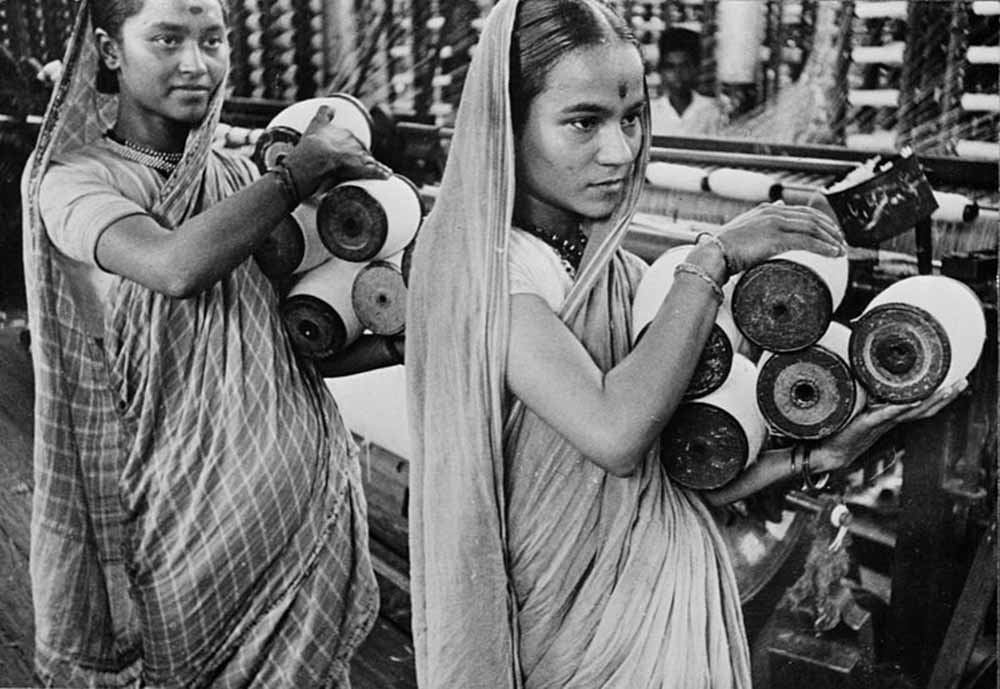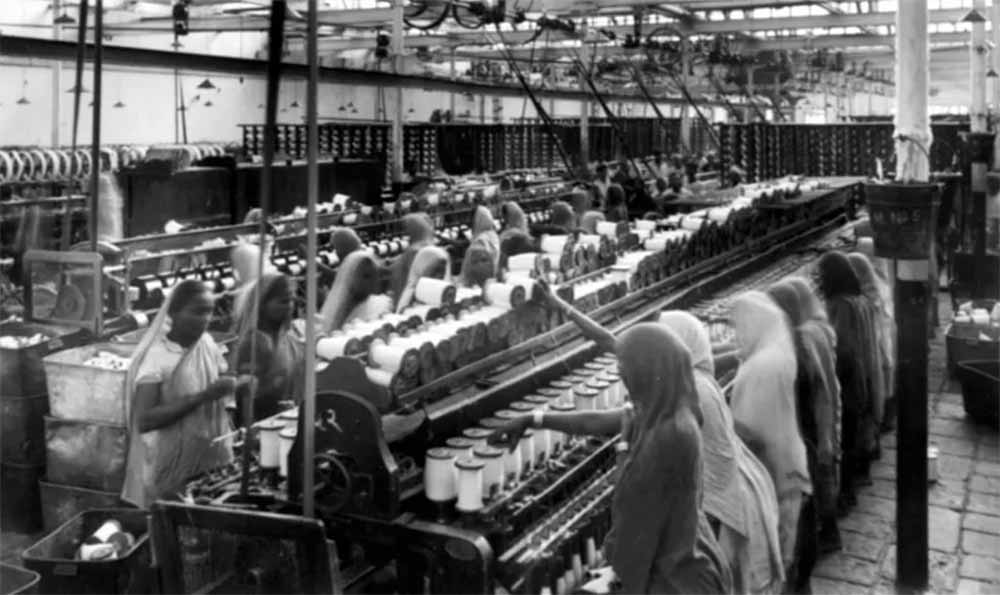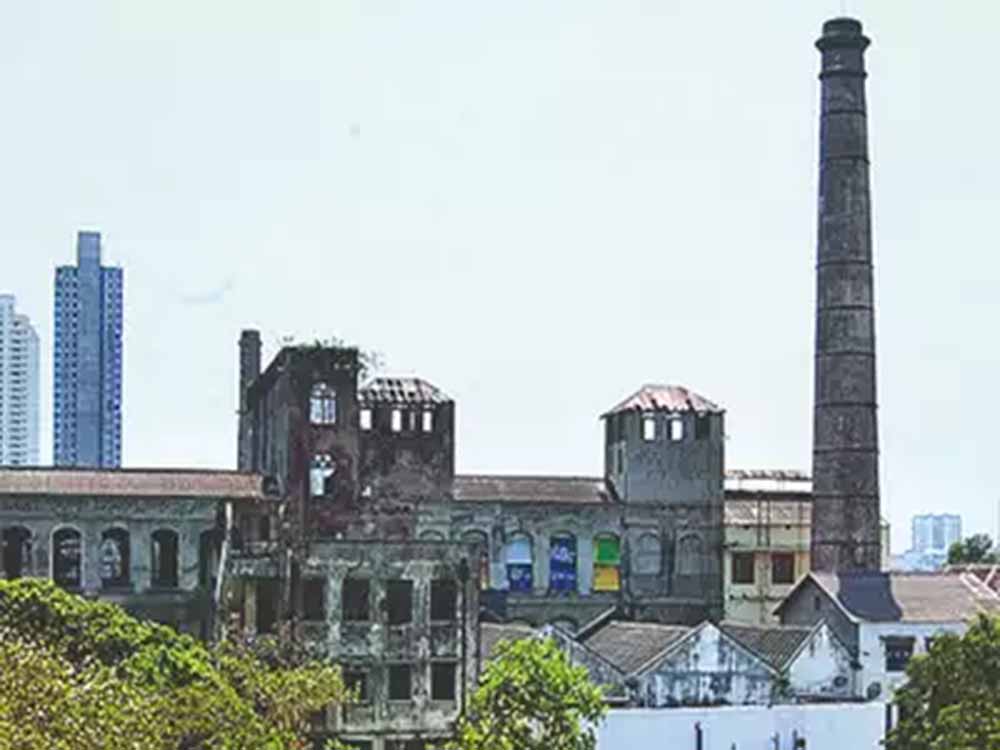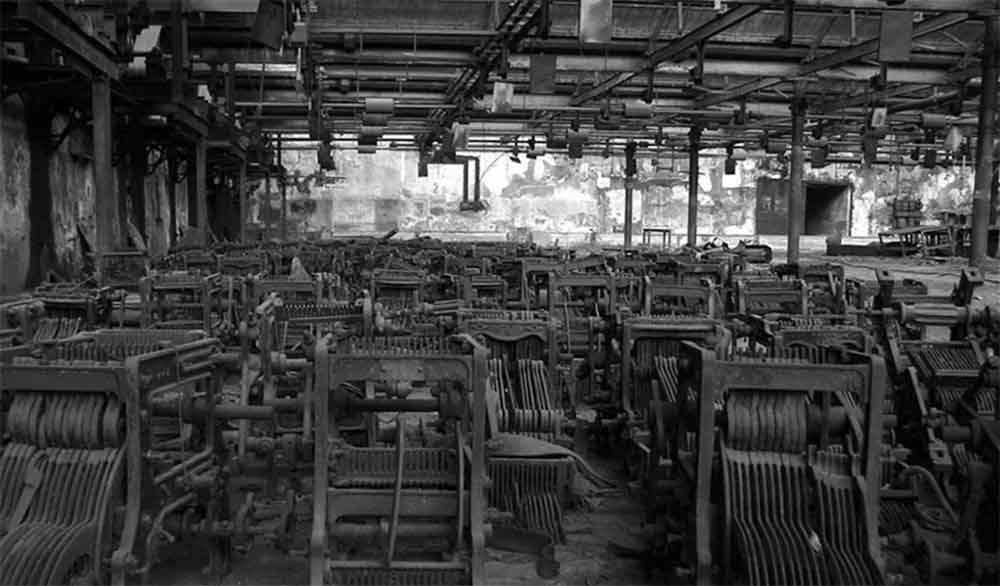In the archives of Indian industrial history, few dates stand as pivotal as February 22nd, 1854. It was on this day that Cowasji Nanabhai Davar, a visionary entrepreneur, established one of the first textile mills in Mumbai, then known as Bombay. This was one of the moments that marked the beginning of a transformative era in India's textile industry, shaping the economic and social landscape of the nation for decades to come.
Introduction to the Cotton Mill Industry
The significance of cotton mills in India's industrialisation cannot be overstated. During the colonial period, cotton was one of the primary raw materials exported from India to feed the burgeoning textile industries in Britain. Recognising the potential for domestic manufacturing, entrepreneurs like Cowasji Nanabhai Davar took the bold step of setting up textile mills on Indian soil.

Image Source: needleandquest.com
Establishment of the First Cotton Mill
Located in the heart of Mumbai, Cowasji Nanabhai Davar's textile mill symbolised the dawn of a new era for Indian manufacturing. Situated strategically amidst bustling trade routes, the mill was well-positioned to capitalize on the availability of raw materials and skilled labour. Its establishment served as a beacon of hope for indigenous industrialization, challenging the dominance of British-controlled manufacturing.

Image Source: whatshot.in
Rise of the Cotton Mill Industry in Mumbai
The success of Davar's mill paved the way for the rapid expansion of the cotton mill industry in Mumbai. Entrepreneurs flocked to the city, drawn by the promise of lucrative returns and the opportunity to contribute to the nation's economic growth. As more mills sprung up across the city, Mumbai emerged as the epicentre of India's textile revolution.
Impact on Mumbai's Economy and Society
The rise of the cotton mill industry had profound implications for Mumbai's economy and society. On the one hand, it fuelled unprecedented economic growth, creating job opportunities for thousands of workers and stimulating ancillary industries. On the other hand, it led to rapid urbanization and labour migration, as people from rural areas flocked to the city in search of employment opportunities. Mumbai's demographic makeup underwent a seismic shift, laying the foundation for the multicultural metropolis it is today.

Image Source: wikimedia.org
Mumbai’s Mills Through History

Image Source: blogspot.com
1. Bombay Spinning and Weaving Company: Established in 1854 by Cowasji Nanabhai Davar, this was one of the first textile mills in Mumbai. Located in Byculla, it played a significant role in kickstarting the city's textile industry. Today, the site has been redeveloped into commercial and residential spaces.
2. The Oriental Spinning and Weaving Company: Founded in 1856, this mill was another pioneer in Mumbai's textile landscape. Situated in Matunga, it contributed to the city's industrial growth. The mill ceased operations in the late 20th century, and the area has been repurposed for various commercial and residential projects.
3. The Bombay Dyeing & Manufacturing Company: Established in 1879 by Nowrosjee Wadia, this mill became one of the largest textile producers in India. With its headquarters in Worli, Bombay Dyeing played a crucial role in shaping Mumbai's industrial and economic landscape. Today, the company has diversified its business interests beyond textiles and operates in various sectors.
4. Kohinoor Mills: Kohinoor Mills was one of the oldest textile mills in Mumbai. Located in Dadar, it was known for its high-quality textiles. However, like many other mills, it faced challenges in the post-independence era and eventually ceased operations.

Image Source: needleandquest.com
5. Phoenix Mills: Originally established in 1905, Phoenix Mills was a prominent name in Mumbai's textile industry. Situated in Lower Parel, it was known for its cotton and silk fabrics. In the late 20th century, the mill underwent redevelopment, transforming into a modern shopping and entertainment destination, housing malls, offices, and a hotel.
6. Shree Ram Mills: Shree Ram Mills was one of the leading textile producers in Mumbai. Located in Worli, it was renowned for its fine-quality textiles. However, the mill faced financial difficulties and ceased operations in the early 21st century.

Image Source: toiimg.com
7. Finlay Mills: Established in 1905, Finlay Mills was another significant player in Mumbai's textile industry. Situated in Parel, it specialised in producing cotton yarn and textiles. However, due to financial troubles, the mill shut down in the late 20th century.
8. Kamala Mills: Kamala Mills holds a unique place in Mumbai's industrial history as it was not primarily a textile mill but rather a compound that housed several mills and later transformed into a commercial and entertainment hub. Originally, Kamala Mills was established in the 1960s as a textile processing unit. However, over the years, it evolved into a complex hosting various industries, including media, technology, and hospitality.
Textile Industry Now
Following the shutting down of textile mills in Mumbai, the city's textile industry underwent a significant transformation, adapting to changing economic and industrial landscapes.
While large-scale textile manufacturing declined, there was a shift towards niche and value-added textile production. Some companies transitioned to producing specialised textiles such as technical textiles, high-end fashion fabrics, and textiles for home furnishings. This move towards higher value-added products helped maintain competitiveness in the global market.

Image Source: needleandquest.com
In response to the closure of large textile mills, small-scale and decentralised textile manufacturing units emerged in Mumbai and its surrounding regions. These included small textile workshops, handloom clusters, and cooperative societies.
Mumbai also became a hub for export-oriented textile units, particularly in the garment and apparel sector. Many companies shifted their focus towards catering to international markets, leveraging Mumbai's strategic location, infrastructure, and skilled workforce. This led to the growth of export-oriented manufacturing clusters in and around the city.
The closure of textile mills coincided with the rise of the retail and fashion industry in Mumbai. The city emerged as a major centre for textile retail, with bustling markets and shopping districts offering a wide range of textiles, garments, and accessories. Mumbai also became a fashion hub, hosting fashion weeks, designer boutiques, and textile exhibitions.
Decline and Legacy
Despite its meteoric rise, the cotton mill industry in Mumbai eventually faced its share of challenges. Competition from modernized mills, labour disputes, and economic downturns led to the decline of many old establishments. However, the legacy of Mumbai's textile heritage lives on. The city's iconic landmarks, such as the towering chimneys of defunct mills, serve as poignant reminders of its industrial past. Moreover, the spirit of entrepreneurship and innovation that fuelled the cotton mill industry continues to inspire future generations of Indian industrialists.

Image Source: googleapis.com
Mumbai's significance in Indian textile history is inseparable from the story of its cotton mills. From humble beginnings in 1854 to becoming the backbone of India's industrialisation, these mills have left an indelible mark on the city's landscape and collective memory. As we reflect on their legacy, we are reminded of the power of vision, perseverance, and the indomitable spirit of Mumbai.